A wonderfully flavorful roasted turkey with herb butter and citrus that captures the essence of traditional Thanksgiving flavors while also keeping things interesting. Roasting a whole bird can be daunting for home cooks but with a simple approach and the right tools, it’s easier than you might think! This post was created in partnership with OXO.
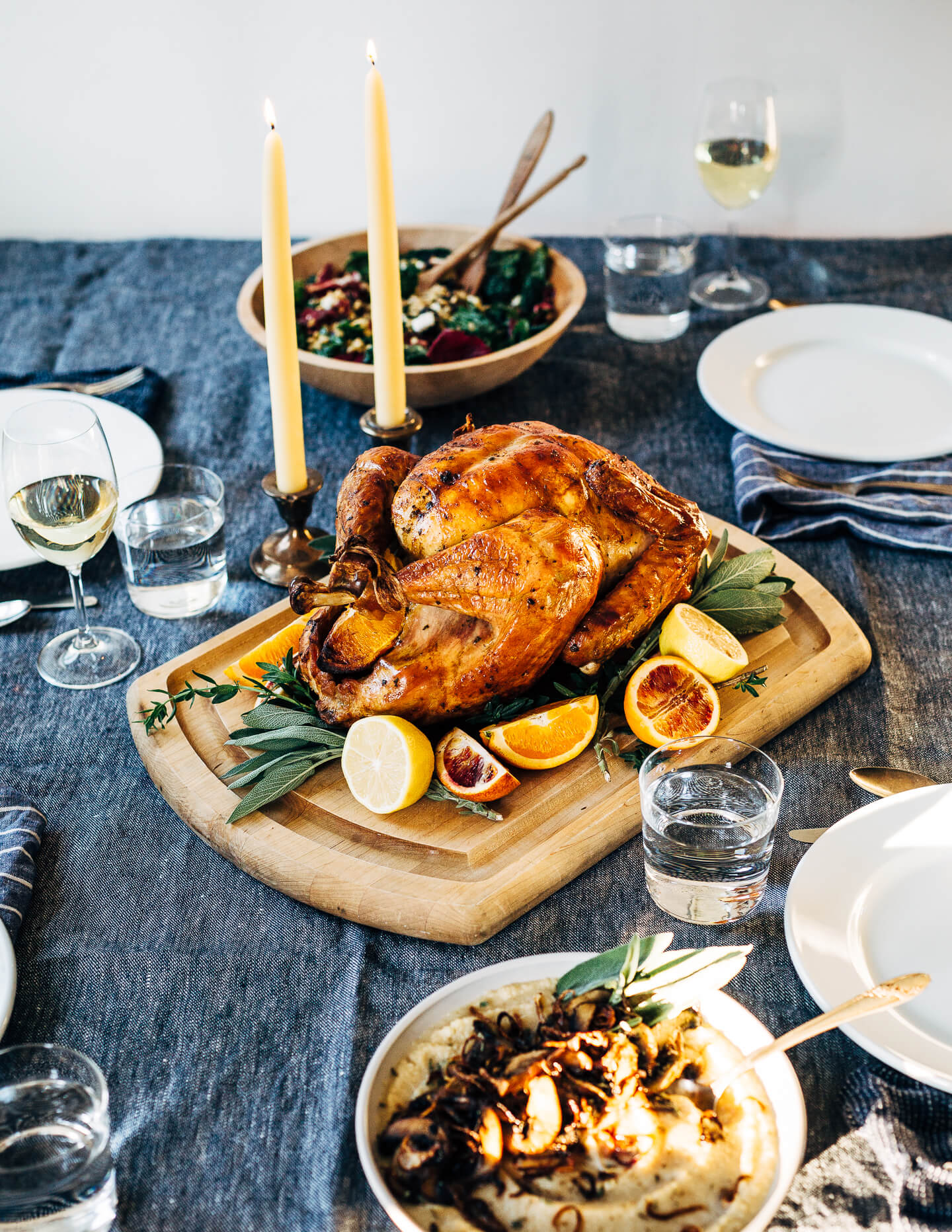
I love a classic roasted turkey with its juicy meat and crispy skin. Some folks like to branch out into deep-frying and spatchcocking, but for me a simple roasted turkey basted in an entire stick of melted butter and gravy made from drippings are not negotiable. I’m happy to push the flavors just a little bit, though. Here, fresh herbs, onions, and seasonal citrus lend the roasted turkey a lively pop of flavor that make it feel fresh, yet traditional.
Essential Tools
No matter what anyone tells you, roasting a whole turkey is pretty straightforward. But there are a couple of steps ahead of time will ensure the bird cooks evenly and the meat is flavorful. You’ll also want to have the right tools. A roasting pan with a rack is nice, but not essential. You will need a quick, dependable, and accurate meat thermometer, like the OXO Good Grips Thermocouple Thermometer. A quality heat-resistant pastry brush also makes things much simpler. And OXO Turkey and Roast Lifters ensure a good grip when moving the bird between the roasting pan and carving board.
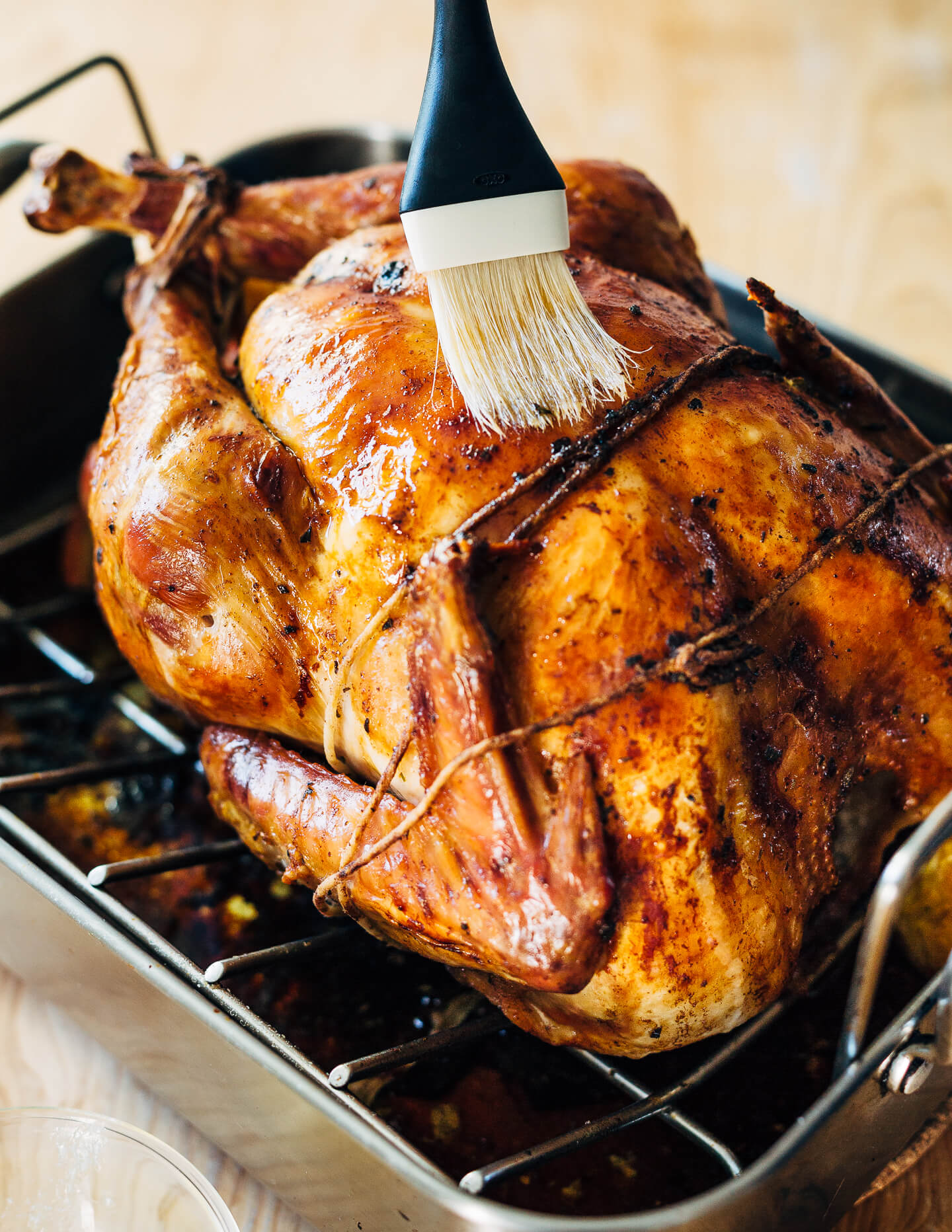
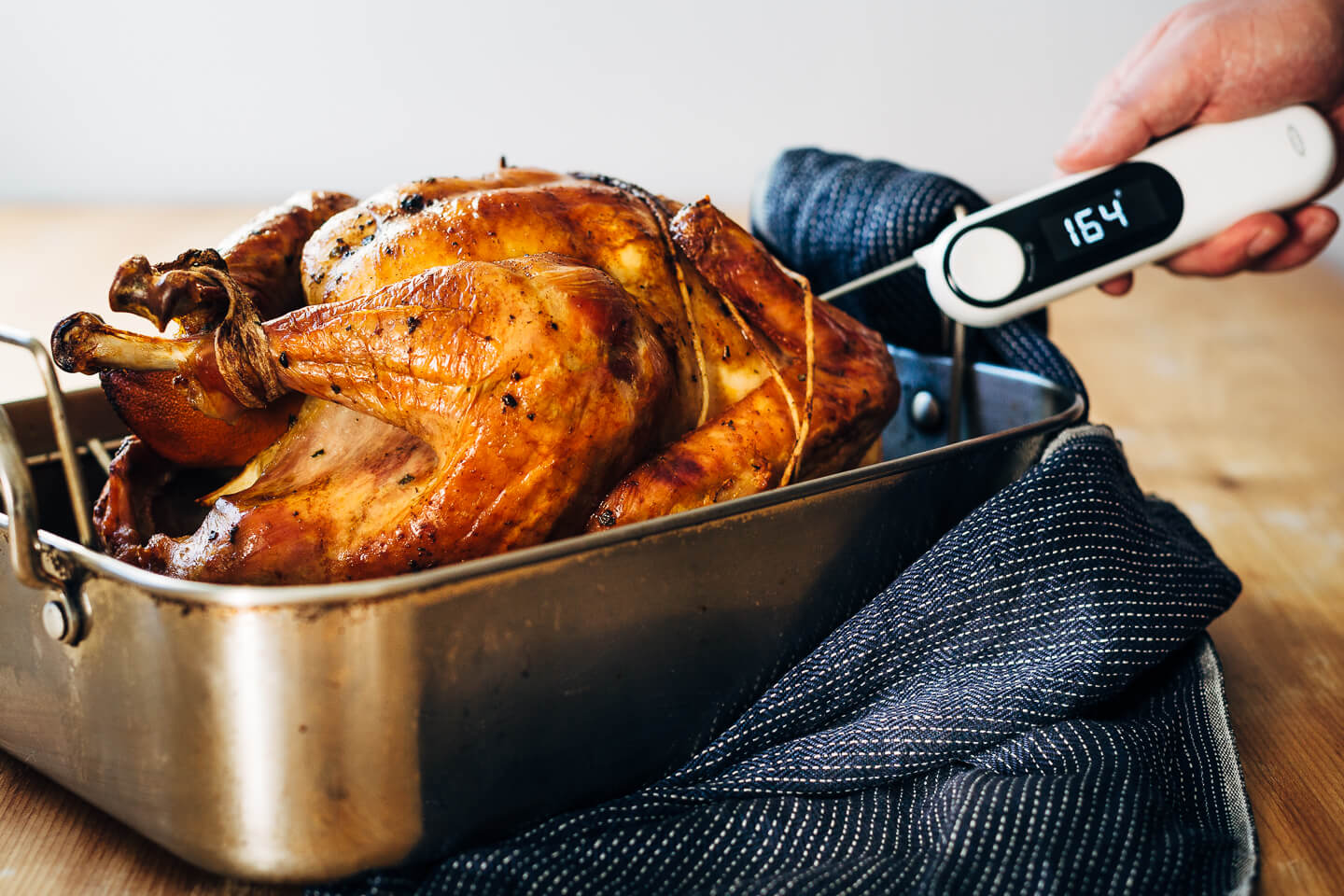
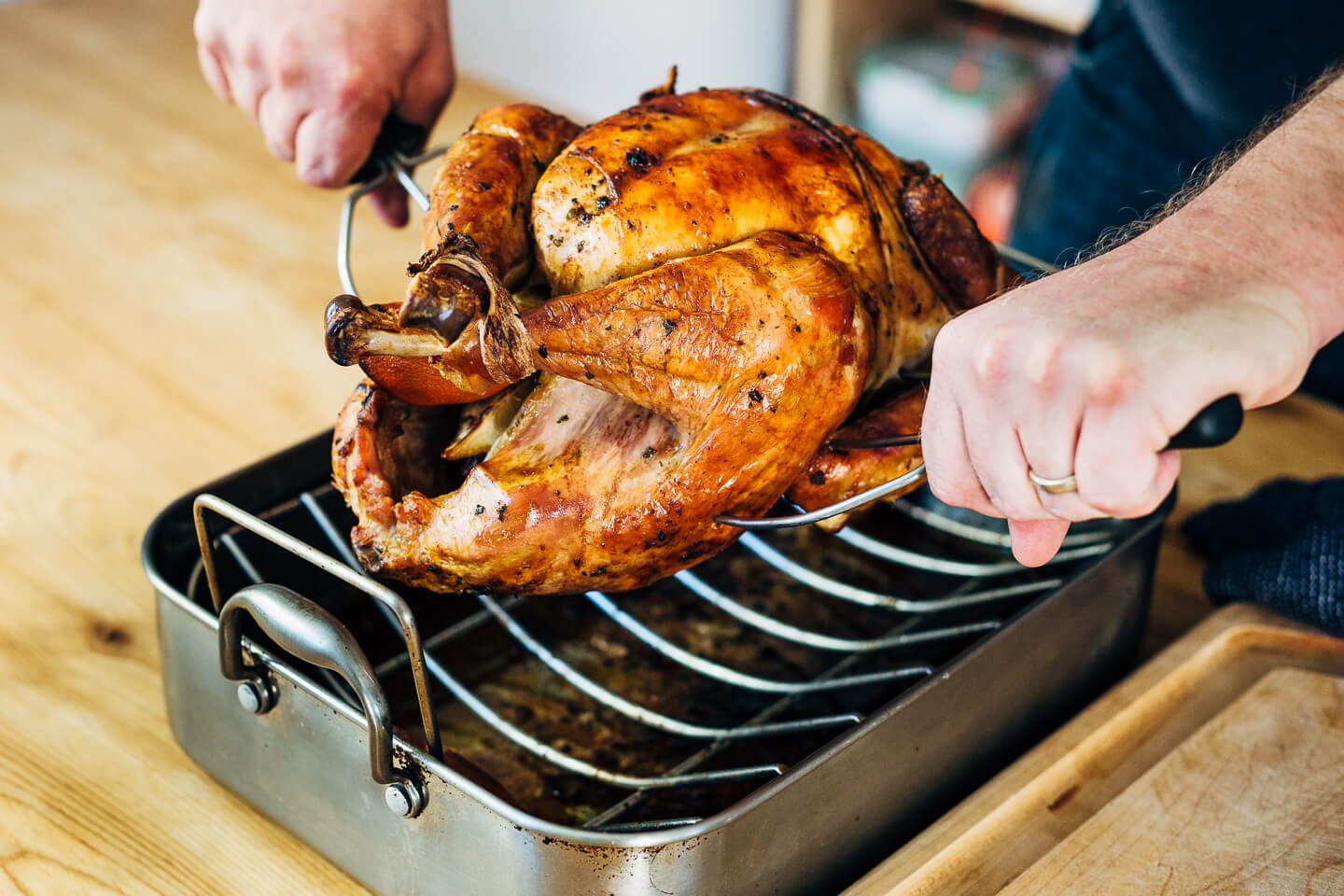
Roasted Turkey Basics: Thaw, Dry Brine, and Roast
To begin prepping, you need a completely thawed bird. If thawing on a short timeline, immerse the wrapped bird in a big pot of cold water. Change the water every half hour, allowing a half hour of thaw time for every 5 pounds. If you have a 15 pound turkey, it will take 8 hours to thaw.
The next and most important step is to dry brine the bird and let the skin dry out in the fridge overnight. This makes for crispy skin and juicy meat. To dry brine, simply rub the bird generously with salt, inside and out, and then set it on a rack in a roasting pan in the fridge overnight.
The next day, rub the turkey skin all over with herb butter and stuff it with onions and citrus. Depending on the exact size of your bird, you’ll need 3 – 4 hours for it to cook through. There are a few key steps in roasting the turkey – the first is to get the skin nice and golden with relatively high heat, then flip the bird and cook it at lower heat until tender. After the flip, use a pastry brush to coat the turkey with butter.
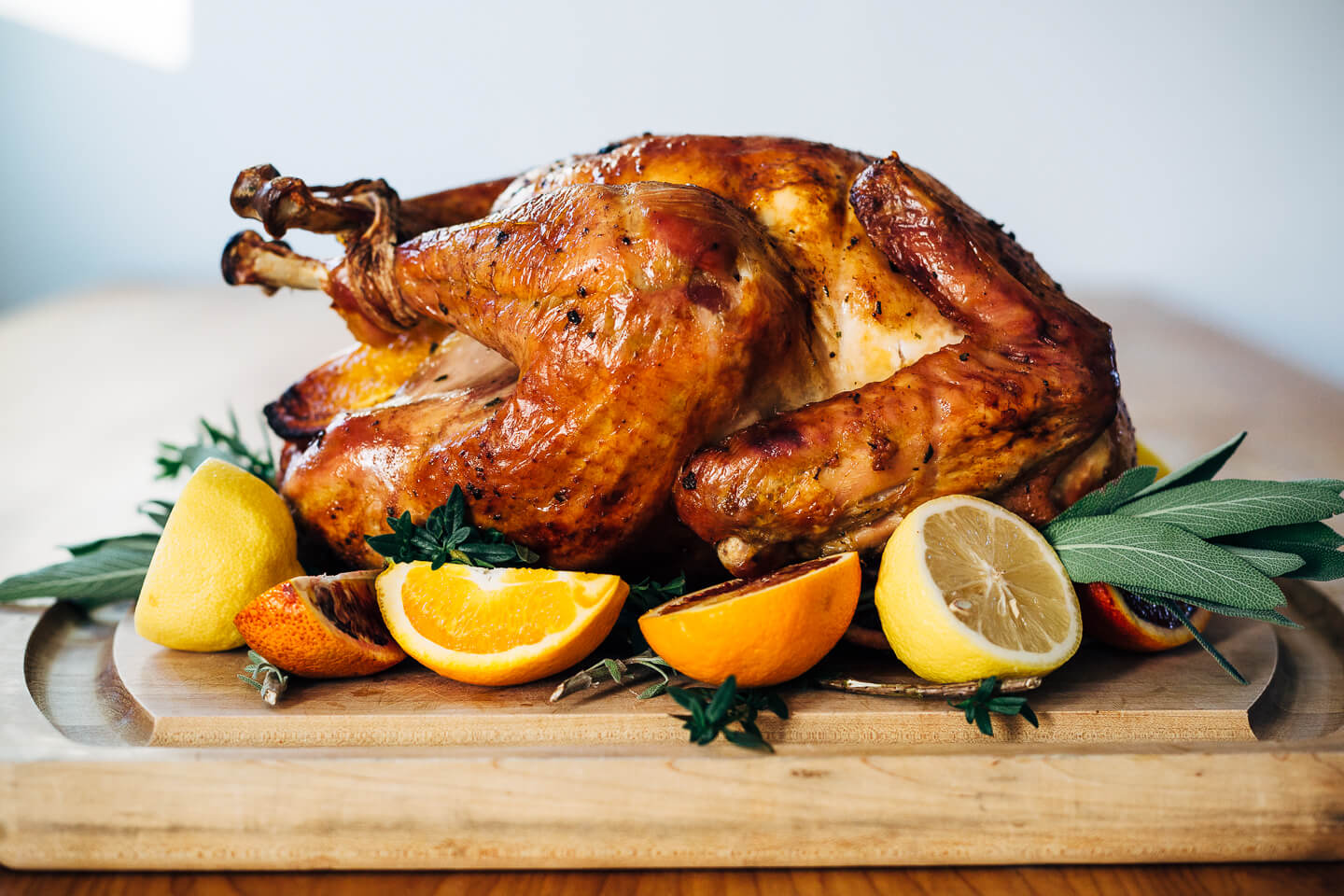
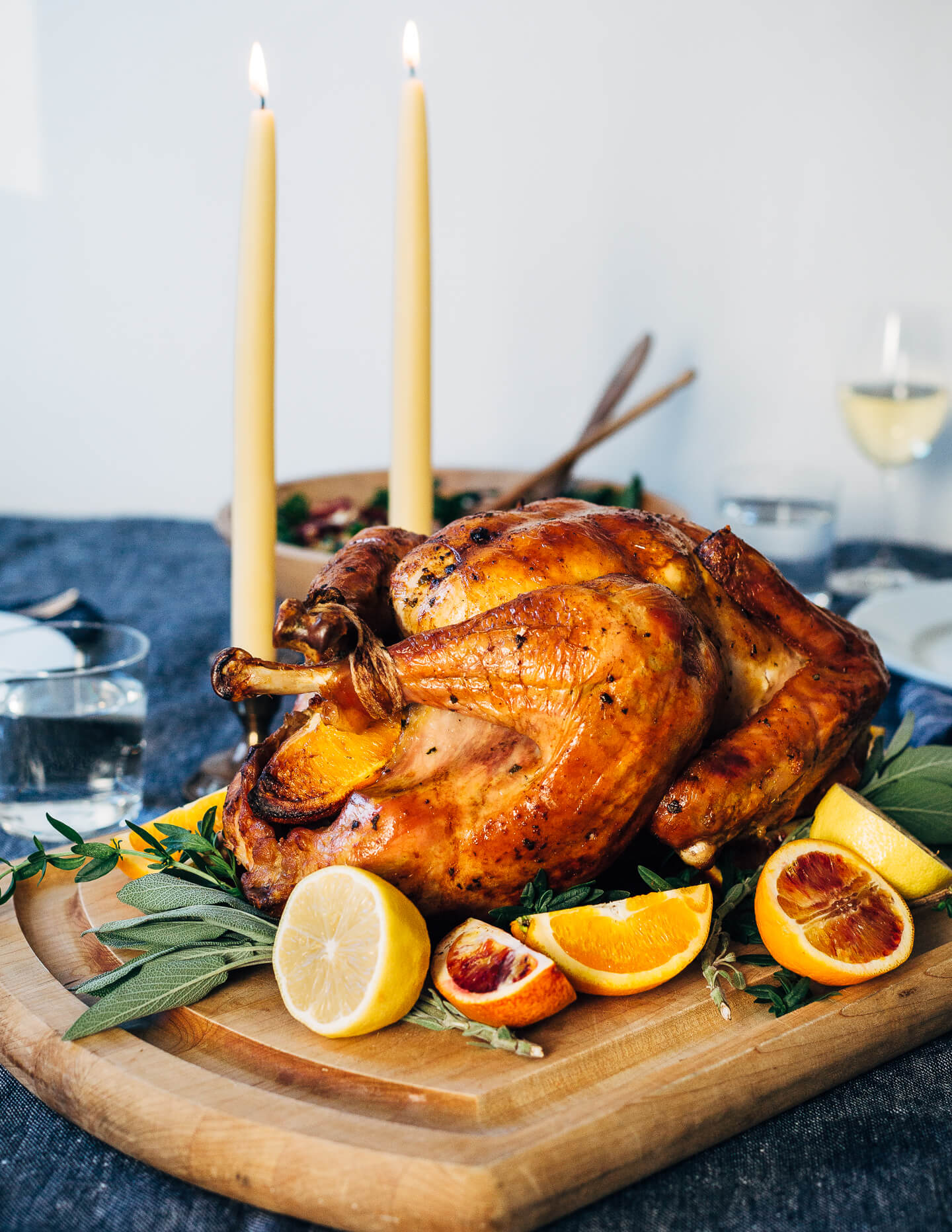 Get the Temp Right
Get the Temp Right
Because most people only cook turkey once a year, it’s hard to remember the lessons of years past. Brian and I usually cook 2 or 3 turkeys a year and even then, we hit pitfalls. A major one is when part of the turkey isn’t fully thawed and cooks more slowly than the rest of the bird. For this reason, it’s a good idea to get a temperature reading at a few different points on the bird before you take the plunge and carve. The OXO Good Grips Thermocouple Thermometer is an essential tool to have on hand for this. It takes readings in an instant, is incredibly simple to use, and provides the accuracy you need when a 15 pound bird and your Thanksgiving feast are on the line.
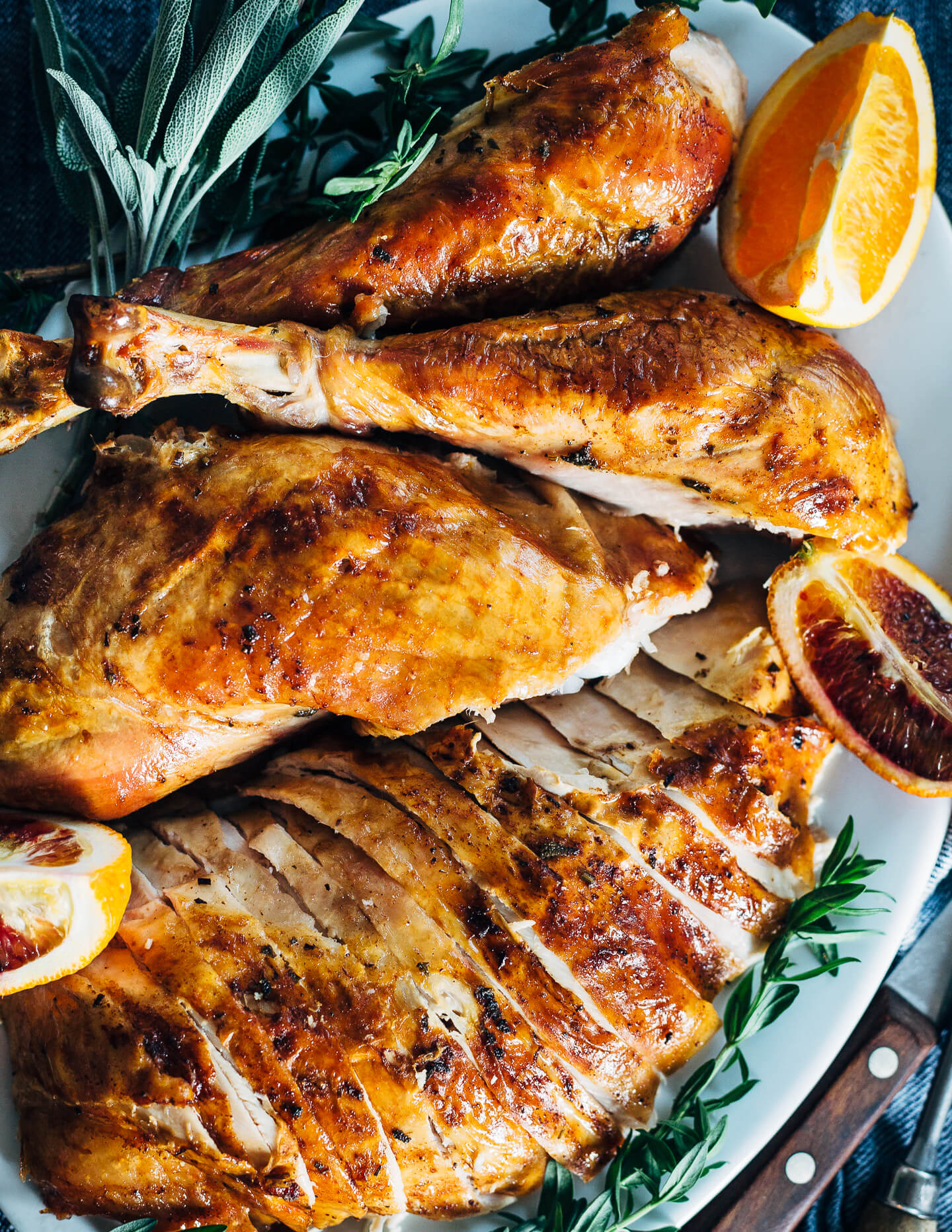
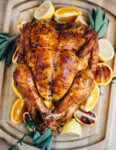
A wonderfully flavorful roasted turkey with herb butter and citrus that captures the essence of traditional Thanksgiving flavors while also keeping things interesting.
Roasting a whole bird can be daunting for home cooks but with a simple approach and the right tools, it's easier than you might think!
- 12 - 15 pound whole turkey, completely thawed
- 3 tablespoons fine sea salt
- 1 teaspoon fresh ground black pepper
- 6 tablespoons unsalted room temperature butter plus 6 tablespoons melted, divided
- 1/3 cup finely chopped fresh herbs (I used a mix of thyme, sage, savory, rosemary, plus several sprigs reserved)
- 1 lemon, zest reserved and halved
- 4 oranges (navel, tangerine, Cara Cara, or blood orange), quartered
- 1 yellow onion, quartered
-
Working 1 day ahead, prep the turkey.
-
Set turkey on a rack in a roasting pan. Remove giblets and neck from turkey cavity (check both sides, just in case!). Trim any excess skin from around the cavity and neck and cut off the tail. Truss turkey by tying feet together and tying wings down with butcher's twine. Rub turkey all over, inside and out, with fine sea salt and pepper, being sure to get all the folds and indentations. Set in the fridge overnight or for at least 8 hours.
-
The next day, preheat oven to 375 degrees F.
-
Use a fork to whisk the lemon zest and herbs into softened butter. Rub herb butter all over turkey, inside and out. Place turkey breast side down and fill cavity with quartered onions and oranges (just as many as will fit – reserve leftovers for garnishing the cooked turkey).
-
Roast turkey 1 hour (or 1 1/2 hours for a larger bird) and then flip the turkey. To flip, set out two dish towels and wear two oven mitts. Grab turkey on both sides using dish towels and carefully flip end over end, rotating it so that the juices inside pour out the bottom cavity and not the neck. Keep hands, arms, and other body parts clear, as the liquid is scalding hot.
-
Put turkey back in oven and continue cooking at 375 degrees F.
-
Melt 6 tablespoons butter in a small saucepan for basting. Check turkey every half-hour, brushing with butter each time. If breast begins to brown too much before the bird is up to temperature, place aluminum foil gently over breast to shield it from direct heat.
-
After about 1 1/2 hours, check the temperature by inserting an instant read thermometer deeply into the space between the leg and the bottom of the breast. Cook until the internal temp reaches 165 degrees F, 2 1/2 - 3 hours total (or longer for a larger bird). Pull turkey and allow it to rest 15 - 20 minutes. Carefully remove it to a cutting board.
-
To carve turkey, first remove trussing twine. Then remove drumsticks and thighs by slicing through the skin that joins the thigh to the breast and then cutting downward until you reach the joint. Push down on the thigh to expose the joint and then cut through it. Separate drumstick from thigh cutting at the joint. Cut thigh meat away from the bone into 1/2-inch thick slices.
-
Next, remove wings by slicing through the joint, then set them aside. To carve breast, cut 1/2-inch thick slices from the sides roughly parallel to the center of the breast. Arrange the meat on a platter and serve. Garnish with reserved sliced citrus and fresh herbs.
Leave a Reply